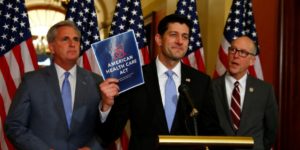When I asked my mom, a Bay Area native, to tell me the first thing that came to her mind when she heard the words UC Berkeley, she said, “I think of the Free Speech Movement and Students for a Democratic Society.” As a staple of the 1960’s, the Free Speech Movement championed the right to have political discourse on their college campus.
Today, many colleges around the U.S. have been installing Safe-Spaces on their campuses. With this development, many students have felt that their right to free speech has been attacked. Some of these students are conservatives living on liberal- dominated campuses where they feel unable to speak their minds. In February, BBC published a video “It Gets Lonely: Being Conservative on a Liberal Campus,” in which conservative students at George Washington University and American University discuss the hostility they face due to their political views.
When members of the alt- right are scheduled to speak at liberal schools, issues arise. Violent protests in response to ex-Breitbart editor Milo Yiannopolous at UC Berkeley and against controversial scholar Charles Murray at Middlebury College have helped bring national attention to the limits of Free Speech on college campuses.
At UC Berkeley, protests began before Milo Yiannopolous even arrived on campus. When students heard that the Berkeley College Republicans had booked Milo as a guest speaker, they took to the streets. Yiannopolous, who was the editor of Breitbart news at the time and has often been cited as a white nationalist, had been on a tour of several college campuses. Earlier on the tour, he was accused of singling transgender students out and claiming they have psychological disorders. Protests that began peacefully as Yiannopolous arrived on campus quickly grew violent. Riots broke out, windows were broken and explosives and tear gas was used.
After the violence settled and media outlets could reflect on the events, many were concerned about what the violence meant in terms of free speech. It’s unclear how the violence began – many believe that student anarchists were involved – but regardless it raises the question of what level of protest is acceptable at these educational institutions.
At Middlebury, the school’s American Enterprise Institute Club had invited Charles Murray to speak about his most recent book Coming Apart, which discusses the decline of the white working class. While the event was not mandatory for students to attend, it became a hot topic on campus. The main source of controversy surrounding Mr. Murray was his previous book, The Bell Curve. Published in the ‘90’s the labeled book was accused of supporting white supremacy through its argument that intelligence is hereditary. Additionally, the campus grew even more tense after the Political Science department at Middlebury cosponsored the speech. According to Dylan Montagu ’15, who is currently a freshman at Middlebury, “This wouldn’t be a big deal normally, but to many students they saw this decision by the Political Science department to almost validate Murray’s past research on how minority races are less intelligent than whites.”
According to Montagu, while the event started at 4:30 on March2nd,lines were already long starting at 3:50. About 100 students were protesting and chanting. When Murray took the stage at 4:30 p.m., students stood up, chanted, and turned around. After the objections, the event had to be moved to a different room and the protests turned rowdy and violent. Allison Stanger, a professor of International Politics at the college, even received a concussion.
Montagu feels that the incident doesn’t represent the actions of the Middlebury community. Additionally he thinks “that the Middlebury administration has handled the whole situation well – even in the days leading up to the event, when students were petitioning the school to call off the speech, the administration was firm in their decision to keep his talk. Additionally, they’ve made it clear that there will be some repercussions for students who participated in types of protest that aren’t in line with the college’s policies – for example, chanting during the speech of a visiting speaker, anyone who may have had to do with the violence that happened against Professor Stranger or rocking Public Safety’s (our version of campus police) cars and pulling fire alarms to try and stop/disrupt the speech.”
Students were still upset by the administration’s firm hand in keeping the speaker. In a New York Times article covering the protest, senior and Philosophy major Elizabeth Siyuan Lee wrote, “For too long, a flawed notion of ‘free speech’ has allowed individuals in positions of power to spread racist pseudoscience in academic institutions, dehumanizing and subjugating people of color and gender minorities. While I defend Murray’s right to speak his mind, the fact that the college provided an elevated platform for him did more harm than good.”


The issue has caused division within not only the student body but also the media. The general sentiment of the student body is that the idea of the protest was positive, but the violent execution and danger that ensued was a negative outcome. Many have scolded Middlebury college through the media. New York Times op-ed columnist Frank Bruni published an article in response to the protest titled, “The Dangerous Safety of College.” Bruni writes, “The moral of the recent melee at Middlebury College, where students shouted down and chased away a controversial social scientist, isn’t just about free speech, though that’s the rubric under which the ugly incident has been tucked. It’s about emotional coddling. It’s about intellectual impoverishment.”





